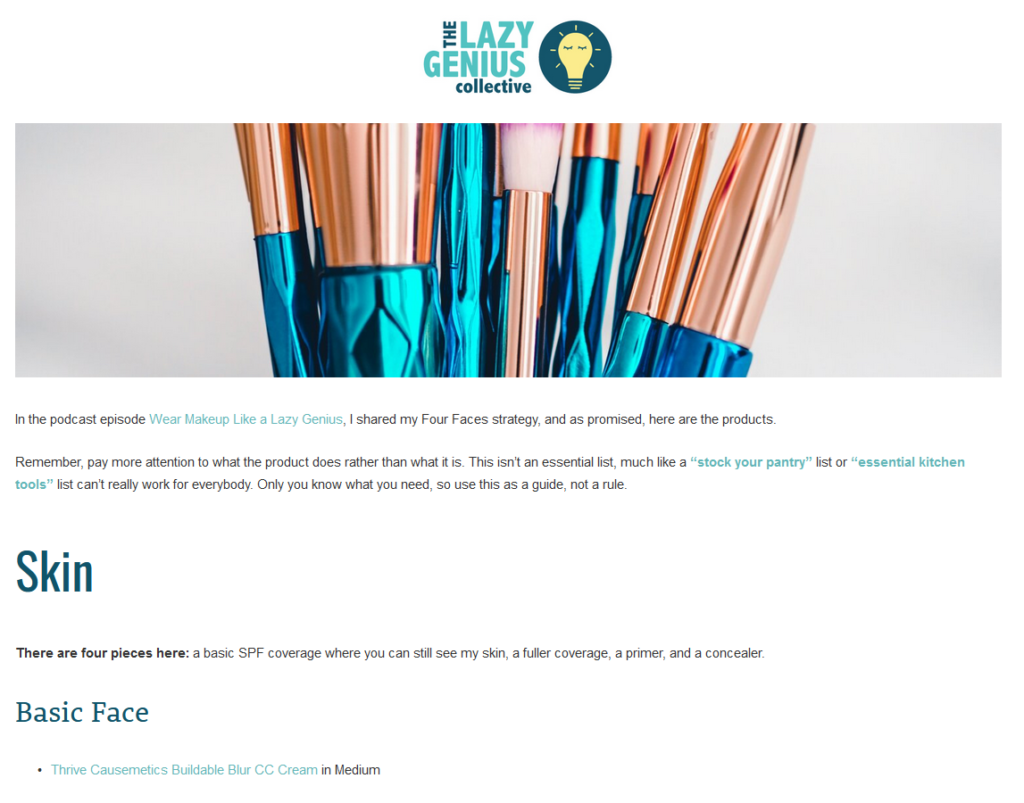If you’re a creative professional, you’ve probably wondered about different ways to grow your business and make more money. Apart from taking on new clients or more lucrative projects, you might not know what options are available to you.
What is affiliate marketing?
Affiliate marketing is a type of revenue sharing. Here’s how it works in brief:
- You (the affiliate) join a network and sign up for an affiliate scheme run by a retailer (the merchant). You can join multiple networks and be an affiliate for several merchants if you wish.
- You promote the merchant’s products using a special link with a unique identifier or tracking code.
- Your website visitors click on your affiliate links.
- If they make a purchase, you get a commission. Affiliate commission rates can be anything from 5% to 50% or even more.
Here’s a visual of how the process looks:

Why should freelance creatives get into affiliate marketing?
The short answer is that it’s a great way to make more money. As a freelance creative, such as a designer, writer, or photographer, you trade your time and expertise for money. There’s often a limit to how far that can scale, based on the number of hours in the day and the projects available to you. That being said, if you are just starting out in freelance web design then check out this resource from CourseF, they have listed the ten best web design courses for beginners.
Therefore, if you want to grow your business and make more money, you’ll want to start generating sources of passive income. There are many ways you could do this, such as develop and sell an online course, writing and selling an ebook, or getting into dropshipping. But affiliate marketing is one of the best ways to build up a steady passive revenue stream.
In the next section, I’ll show you how to get started in affiliate marketing as a creative freelancer.
How to get started
The great thing about affiliate marketing is that it costs nothing to get started. No reputable affiliate program will charge you a fee to join, and you don’t need to buy or hold any products. In fact, all you really need is your own website.
Be aware that affiliate marketing is not a get-rich-quick scheme and you probably won’t start making money overnight. Unless you already have a well-established audience and significant website traffic, it will take time to start earning money with affiliate marketing.
Let’s dive in.
1. Choose a network
Some retailers run their own affiliate programs independently. Most programs, however, are part of a network. Here are just a few you may have heard of:

Amazon also has its own affiliate program – Amazon Associates. The commission rates are at the bottom end of the scale, and some have recently been cut further due to COVID-19. However, Amazon has sheer scale on its side as the world’s biggest retailer. Our verdict? Use Amazon Associates by all means, but don’t rely on it exclusively for your affiliate income.
Before you do anything else, you need to choose the right affiliate network(s) for you and sign up for an account. We recommend choosing just one network to start with. You can always scale up later. Here is a great resource about recurring affiliate programs.
How do you know which network to join? It will depend on the niche in which you operate. Have a look at some of the best affiliate networks for 2020 and decide which one is the right fit for you.
2. Choose products to sell
The products or services you choose to sell through your affiliate links should be related to your business. For example, if you’re a photographer, you might want to advertise cameras and accessories, photography courses, or photo editing software. If you’re a writer, you might choose to advertise keyboards, pens and stationery, writing courses, or grammar checking tools like Grammarly (here’s a good example of a blogger promoting Grammarly). And so on. Speaking of writing, here’s a great resource from FirstSiteGuide – 14 Best Online Grammar Checker Tools in 2020.
We recommend choosing 1 – 3 merchants’ programs to focus on initially. Again, you can always add more later.
Affiliate products fall broadly into three categories:
- Physical items (e.g., hardware, cameras, books).
- Informational products (e.g., courses, e-books).
- Services (e.g., web hosting, VPNs).
In general, we recommend affiliate marketers start out by picking one niche to focus on. This will help your site to rank faster, as Google will start to see it as an authority in that niche. Once you’re established in that niche and your site has started to rank, you can expand out if you wish. If you’ve already got a well-established site and audience, you might wish to start by advertising relevant items from two or three of these categories.
You don’t necessarily have to have used the products or services yourself, but it’s an advantage if you have. Remember that you’re tying your reputation to the products you promote, so ensure they’re legitimate and of a high quality before you start telling your audience to buy them.
3. Post and promote your links
You’ve joined a network and chosen some products or services to promote. What next? Now it’s time to start sharing and promoting your affiliate links.
Let’s explore a few of the ways you can do that.
– Blogging
Affiliate marketing lends itself very well to those with active blogs and an engaged following. Therefore, if you already have a blog for your business, start including affiliate links within your posts. If you haven’t started blogging yet, take the time to do so.
Be aware, though, that your blog should not become one long advertisement for your affiliate link. If it is, no-one will read it and they certainly won’t buy from you. You need to provide valuable content for your audience. Make sure every post offers relevant information, actionable tips, or another useful takeaway.
Here are some ways to include your affiliate links in your blog content organically:
– Review products. If you try something amazing, tell your audience about it. If the product fails to impress, suggest alternatives.
– Share case studies and success stories, and mention the products or services that were used in completing the project.
– Create “best of” round-ups and product-based listicles (e.g., “The Best Cameras Under $1000,” or “The Ten Best Web Design Courses for Beginners”).
– Write detailed “how to” articles, breaking down a process into step-by-step instructions. You can suggest or recommend products when telling your audience what equipment they will need.
– “Behind the scenes” content. For example, you could share a day in the life of your freelance career, and weave in mentions of the products you use in your work.
Here’s an example of a blog post containing affiliate links by Kendra Adachi of The Lazy Genius Collective. Kendra shares her makeup routine, using affiliate links to share some of her favorite products:
 Source: The Lazy Genius Collective
Source: The Lazy Genius Collective
Unless you’re writing a specifically product-based piece or round-up, we recommend including no more than 2-3 affiliate links per post. Any more starts to look spammy.
– Banner ads
If you are not making full use of your blog or website sidebar, you’re wasting valuable space. If the merchants you work with provide banner ads (and many do), include these in your sidebar with a clickable affiliate link.
In our experience, banner ads see fewer clicks and conversions than links within content, but they’re still useful.
– Social media
Don’t forget that you can also promote your affiliate links on your social media channels. As with your blog, ensure that they tie in with the rest of the content. Posts should not be purely promotional in nature and should sit amidst plenty of non-affiliate content.
You don’t need to have a presence on all the major social media channels to be successful with affiliate marketing. The most important thing is to go where your target audience is. For example, established professionals in senior positions tend to use LinkedIn, while young people and students are most active on Instagram.
Here’s a good example of an affiliate marketing social media post, in this case on Facebook:
 Source: Sarah Lentz on Facebook
Source: Sarah Lentz on Facebook
A note about Instagram: you cannot include a clickable link in the text of an Instagram post. If you have more than 10,000 followers, you can use Instagram Stories’ “swipe up” linking option. If not, you can use the “link in bio” workaround and a connected tool like Linktree. Here’s an example from Danish travel photographer Jonas Hornehoj:
 Source: @TheFreedomComplex on Instagram
Source: @TheFreedomComplex on Instagram
Social media moves quickly, so it’s important to keep your content current. Social media is a great place to share your promotions tied to particular shopping dates (e.g., Black Friday saas deals or Christmas), as well as time-limited special offers.
– Email marketing
Email marketing is still considered one of the most effective forms of marketing there is. Therefore, if you are not currently doing regular email marketing for your business, this is a great time to start.
If you’ve got a strong email list built up, you can start including your affiliate promotions in your marketing emails. If you run a weekly newsletter, why not start including a “deal of the week”, highlighting a product or promotion? You can also include affiliate links organically in your email marketing content, just as you do in your blog posts.
A quick additional tip: verify all email addresses through a tool like FindEmails. This will reduce your bounce rate and keep your deliverability score high.
4. Scale your affiliate marketing efforts
You’ve started sharing your affiliate links, and the sales have started to roll in. Congratulations! Once you’re up and running, it’s time to scale your affiliate marketing efforts.
Here are some ways to do that:
SEO first
The more members of your target audience visit your website, the more affiliate sales you’ll make. Therefore, it’s essential to focus on search engine optimization (SEO) to drive as much high-quality traffic to your site as possible.
Here are some of our top SEO tips for freelance creatives:
- Take the time to do robust keyword research. Focus on long tail keywords and aim to rank for high-volume, low-competition terms (terms that lots of people are searching for but few are trying to rank for).
- Use a plugin to help you optimize your blog posts. All In One SEO is useful for this.
- Use a plugin like WP Smush to optimize the size of your images.
- Use alt tags on all images. These are small snippets of text that describe the image’s content and purpose, and should contain your target keywords for that post or page.
- Aim to improve your site’s load speed.
- Ensure that your content is unique, high-quality, and uses your target keywords without keyword stuffing.
Paid social ads
If you want to drive more traffic to your site, paid social media advertising is a great way to do it. With paid social ads, you can choose the parameters for the audience you want to target, selecting by demographics, location, or interests. You can also set a daily budget, so you never spend more than you can afford. Even a few dollars per day can allow you to reach a large audience.
Remember that social media is a passive medium. The people who see your paid ads are likely not ready to buy right at this moment. Therefore, the goal of a paid social campaign is not to get them to click an affiliate link and make a purchase immediately. Instead, offer value in the form of great content or a relevant lead magnet, with the intention of bringing them to your site and getting their email address.
Once those website visitors are in your email funnel, you can start marketing to them in that way, making the most of email marketing’s outstanding return on investment (ROI) figures.
PPC advertising
Pay-per-click (PPC) advertising can be used to bring your content to the top of search engine results pages for particular keywords. Here’s an example – in this instance, all three of the top results are paid ads:

You pay each time someone clicks on your ad, and the amount depends on the popularity of and level of competition for your chosen keywords.
PPC search engine advertising is useful because, if you choose the right keywords, you can attract highly qualified leads. People who search for product or service-based keywords are likely ready to buy or soon will be. Therefore, we recommend targeting keywords related to the products you sell through your affiliate links, and directing the lead to a relevant piece of content or landing page.
If you’re doing PPC, remember to track your relevant metrics to ensure you’re seeing a sufficient return on your investment. It’s easy to blow your advertising budget if you’re not careful. While you can manage campaigns yourself, working with an experienced PPC agency can help optimize your spending and results. Ensure you’re bringing in enough money through PPC leads to cover advertising and other costs. In general, we recommend waiting until your site is well established before you start investing in PPC.
Growing your freelance creative business with affiliate marketing
As a freelancer or independent creative professional, it can be difficult to know exactly how to scale your business. Wherever you are in your creative career, it’s smart to start building up sources of passive income.
Be aware, though, that affiliate marketing takes work and effort to get right. It is not “passive” immediately, and you will not be successful overnight. But if you put the effort in, creating the right sort of content and attracting the right audience to your site, you’ll soon start reaping the rewards.
Here’s to making your first affiliate sale! Good luck.


